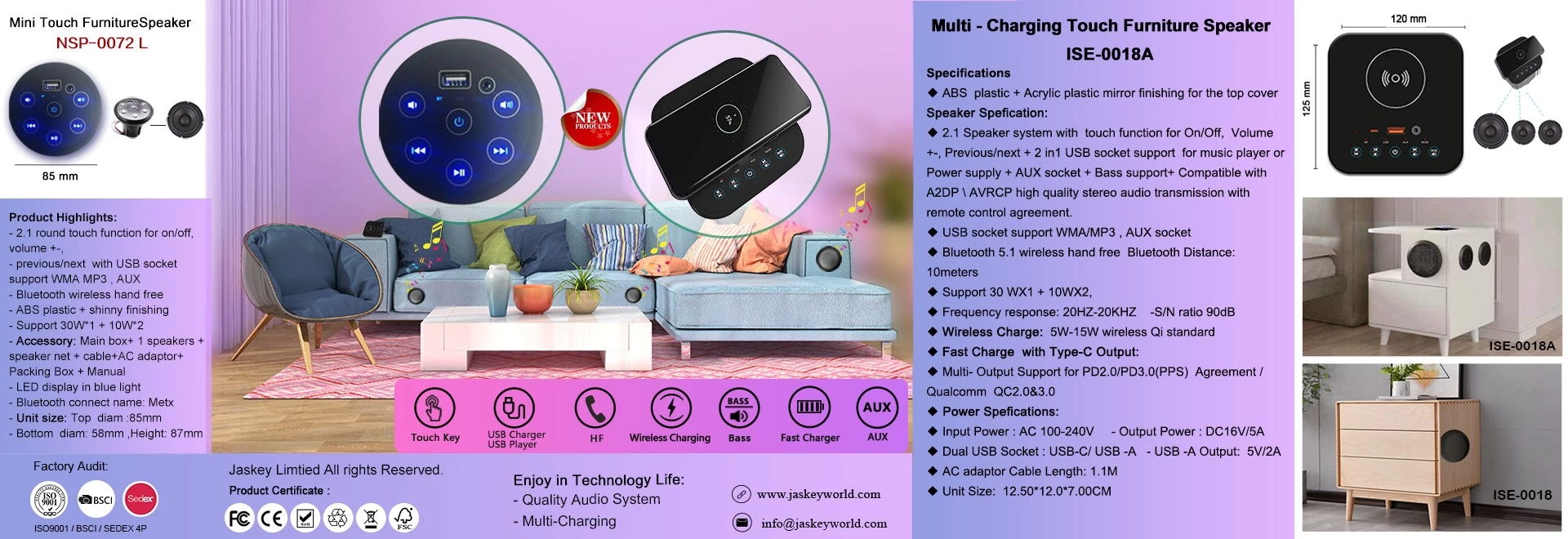What should be paid attention to in audio debugging and audition
What should be paid attention to in audio debugging and audition
When the user selects the speakers according to their own preferences and economic conditions, the next step is to carry out a series of work such as positioning, installation and debugging of the speakers. Since the audio-visual room has a set of strict requirements for the installation, placement and debugging of speakers, this shows that users can only obtain ideal audio-visual effects if they abide by these specifications. Now I will introduce some suggestions for the installation and debugging of audio-visual room speakers.
1.Accurate measurement of sound values
First of all, measure the distance between each speaker and the ear (generally, the distance between the tweeter and the human ear shall prevail), and input the measured value into the av amplifier. The user should use a sound pressure meter to measure the output sound pressure of each channel at the listening position, and adjust the output level of each channel in the AV amplifier independently according to the readings, so that the sound pressure of each channel reaches 80dB The reference sound pressure value. Then the speaker configuration is basically complete.
After completing the above steps, the basic debugging has been completed for most users, but for those who pursue better sound effects, it is also recommended to use an equalizer to correct the frequency response curve of the room. The frequency response curve of most listening environments is not ideal. Although some people think that adding an equalizer will affect the sound quality, if the frequency response curve of the room is not ideal, it will seriously affect the overall sound balance, and finally lead to the deterioration of the overall sound effect. Therefore, when the listening environment is relatively unsatisfactory, using an equalizer should be a good choice. Consulting telephone 13241902523
2.Seek professional help
Before using an equalizer, the first condition is to understand the frequency response curve of your room. At this time, you should find a professional to help you measure the frequency response curve of the room. Then, make corresponding attenuation or gain on the equalizer according to the room frequency response curve. However, it should be noted that when adjusting the equalizer, it should not be overly withered. This is because adjusting the gain of the corresponding frequency band in the equalizer actually increases the output level of a certain frequency. If the gain of a certain frequency is adjusted too much, the amplifier will burn out due to the excessive gain of the front end. , so be careful when adjusting. It is best to seek help from professionals with years of hands-on experience.
3.Reasonably place the exact position of each speaker
Another point worth reminding here is that consumers must use the software they know and constantly adjust the speaker system through actual listening in order to achieve the best audio-visual effect.
The subwoofer is mainly used to make up for the lack of low-frequency lower limit of the main speaker, and at the same time, it can also play a role in increasing low-frequency energy. Therefore, consumers must set the low-frequency crossover point of the av amplifier before using it. When setting the crossover point, it should be set according to the selected speaker, and the user must set the crossover point of each channel according to the low frequency response of each speaker. After the configuration of the crossover point is completed, the subwoofer can be positioned. Since the low frequency below 80hz is almost non-directional, theoretically speaking, the subwoofer can be placed anywhere in the room. But in fact, consumers need to try to place the subwoofer in different positions in the room to find out the best placement point. In general, consumers can place the subwoofer in front.
4.Key points of audio audition
After debugging and installation, the user should listen to the actual effect of the uniform and uniform sound of the speaker, which means that the sound from the bass to the treble is uniform and uniform in a wide frequency range. But in fact, it is difficult to judge the unity of timbre as a whole; in fact, it is difficult to judge the outcome of the unity of timbre as a whole, so it has to be decomposed into the following four aspects for description.
Mid-frequency roundness: This part is dedicated to listening to whether the mid-frequency part of the human voice is polluted by the tone of the speaker, which is a defect that is prone to appear in general speakers.
Low/Mid-Frequency Disturbance: This condition is easy to hear, and is usually marked by a humming sound or a hollow sound.
Low-frequency fullness: People often use group string performances to test performance in this area, specifically, whether the sound of stringed instruments is abnormally sharp, dry, or too sweet. This has relatively strict requirements on the listener, requiring a certain sense of music and appreciation experience. Also listen to a few more discs at the same time to ensure that the poor sound quality is not caused by the record itself.
High-frequency clarity: In most music, there is almost nothing above 13 kHz, and if we do hear a sound at this frequency, it will only be a flash, not a musical tone. Listening to the strike of cymbals in jazz or rock is an easy way to master this sound. Pop high-hat rides combine jazz and rock, and natural recordings of this type are excellent test material, containing clean, repetitive moments of high notes. You have to concentrate on listening to each of these momentary trebles to see if they are dull, too sharp, and fuzzy.
In short, the audition standard of a good speaker should be: the high frequency is slender and soft without harshness, the intermediate frequency is full and bright, and the low frequency is firm, clean, flexible and full of volume.










